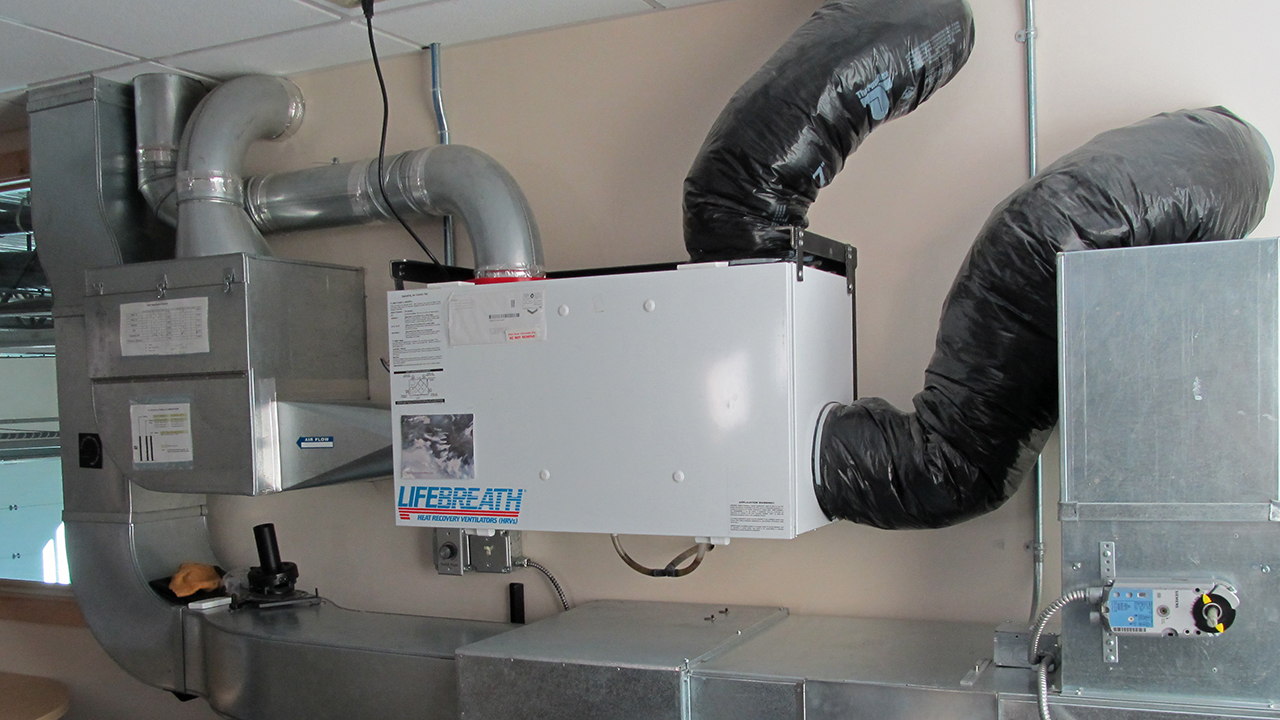How Heat Recovery Ventilation Boosts Indoor Air Top Quality and Reduces Energy Expenses
Heat Recovery Ventilation (HRV) systems play an important role in enhancing interior air quality while all at once decreasing power expenses. By efficiently trading stagnant indoor air with fresh outdoor air, HRVs help maintain excellent humidity and lower contaminants. Furthermore, their capability to recoup heat from outward bound air reduces the pressure on heating and cooling systems. As energy costs remain to rise, recognizing the full possibility of HRV systems becomes progressively vital for property owners and organizations alike.
Understanding Heat Recovery Ventilation Solutions

Heat recovery ventilation (HRV) systems play an important function in boosting indoor air quality, especially in modern-day, energy-efficient buildings. These systems are developed to move warmth from the outgoing stale air to the incoming fresh air, consequently decreasing energy loss while maintaining suitable temperature level degrees indoors. HRVs contain a warm exchanger, followers, and ductwork, promoting the continuous circulation of air. By removing indoor contaminants and presenting fresh air, HRVs assist to balance moisture levels, stop mold growth, and reduce allergens. The performance of HRV systems lies in their capability to recoup approximately 80% of the heat from the tired air, advertising energy preservation while guaranteeing a healthy and balanced interior environment. Their combination is crucial in achieving sustainable living methods.
The Importance of Indoor Air Top Quality
Indoor air quality (IAQ) is a critical variable affecting the health and wellness and wellness of passengers in any type of environment. Poor IAQ can lead to numerous health and wellness problems, including respiratory system troubles, allergies, and fatigue. In addition, it can worsen status quo such as bronchial asthma. Aspects contributing to reduced IAQ include pollutants from interior resources like cleaning representatives, mold, and inadequate air flow. Preserving excellent IAQ is crucial for promoting a secure and comfortable living or functioning area. Reliable methods to improve IAQ include regular surveillance of air quality, correct ventilation systems, and decreasing using dangerous substances inside your home. By prioritizing IAQ, individuals can assure a healthier setting that promotes productivity and overall lifestyle.
Power Performance Conveniences of HRV Equipments
Numerous home owners and structure supervisors are significantly recognizing the power performance benefits of warm recovery air flow (HRV) systems. By moving warmth from tired indoor air to incoming fresh air, HRV systems substantially reduce the energy required for heating & cooling. This procedure reduces reliance on typical cooling and heating systems, leading to lower energy bills. Furthermore, HRVs assist preserve a balanced indoor climate, preventing excessive home heating or cooling demands. The capability to recover up to 90% of the heat from outgoing air additionally supports sustainability efforts by decreasing total power consumption. Consequently, HRV systems contribute not just to set you back financial savings yet also to a reduced carbon impact, straightening with the growing emphasis on energy-efficient structure techniques.
Installment and Upkeep Considerations
The efficient implementation of warmth healing air flow (HRV) systems calls for cautious consideration of installment and maintenance factors to ensure peak performance. Correct positioning of the HRV system is essential, as it needs to be set up in an area that maximizes air movement while reducing noise disturbance. Furthermore, ductwork has to be properly sized and shielded to stop energy loss. Routine her response upkeep, including filter substitute and system cleaning, is important to secure ideal functionality and interior air quality. Owners need to establish a routine upkeep schedule to determine and resolve potential problems prior to they escalate. Partnership with seasoned professionals throughout both setup and upkeep phases can improve the long life and efficiency of HRV systems, ultimately causing far better indoor environments and minimized power prices.
Real-World Applications and Success Stories
Checking out real-world applications of warmth recuperation air flow (HRV) systems discloses their substantial effect on indoor air high quality and power performance throughout various settings. In domestic buildings, home owners have reported improved air quality, resulting in fewer allergic reactions and respiratory system issues. Schools implementing HRV systems have noted enhanced student concentration and reduced absenteeism due to much better ventilation. Commercial buildings, such as offices and official statement retail spaces, have actually experienced reduced power expenses and boosted worker efficiency. A business office in a temperate climate accomplished a 30% reduction in energy costs after mounting an HRV system. These success stories show that HRV modern technology not only adds to healthier environments but likewise gives substantial monetary advantages, making it a valuable investment for various sectors.
Often Asked Inquiries
Can HRV Systems Lower Irritants in Indoor Air?
The effectiveness of HRV systems in decreasing interior allergens primarily pivots on their ability to filter and exchange air. HRV Heat Recovery Ventilation. By continually changing stagnant air, these systems can greatly decrease irritant degrees throughout interior environments

How Does Moisture Affect HRV System Efficiency?
Humidity greatly affects HRV system performance; high degrees can bring about condensation, minimizing effectiveness, while reduced moisture might boost air exchange. Stabilizing moisture is important for excellent procedure and keeping indoor air top quality.
Are HRV Equipments Noisy Throughout Procedure?
HRV systems can generate differing sound degrees throughout operation, relying on their style and installation. Some systems operate silently, while others may create obvious noise, particularly at higher airflow settings or when improperly maintained.
What Is the Ordinary Lifespan of an HRV System?

Can HRV Equipments Be Utilized in All Environments?
HRV systems can be used in various environments, however their performance may differ - HRV Heat Recovery Ventilation. In extreme temperature levels, adjustments or supplementary systems may be required to assure optimal efficiency and comfort while keeping indoor air high quality